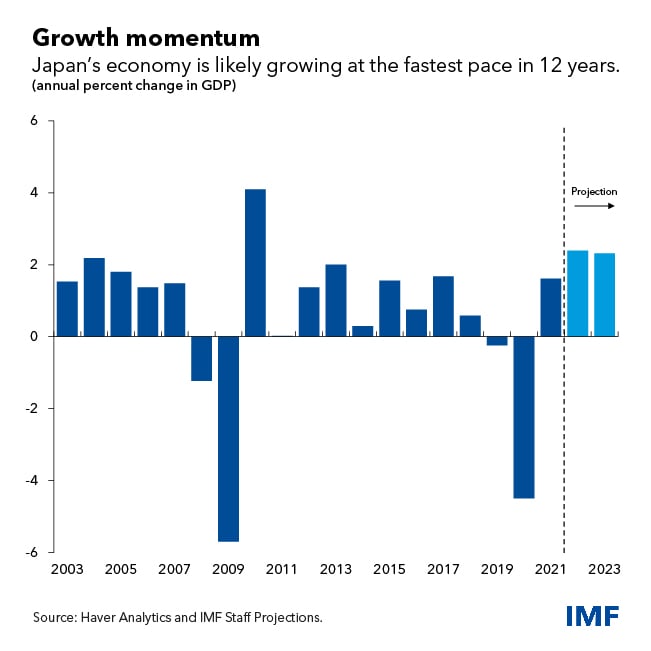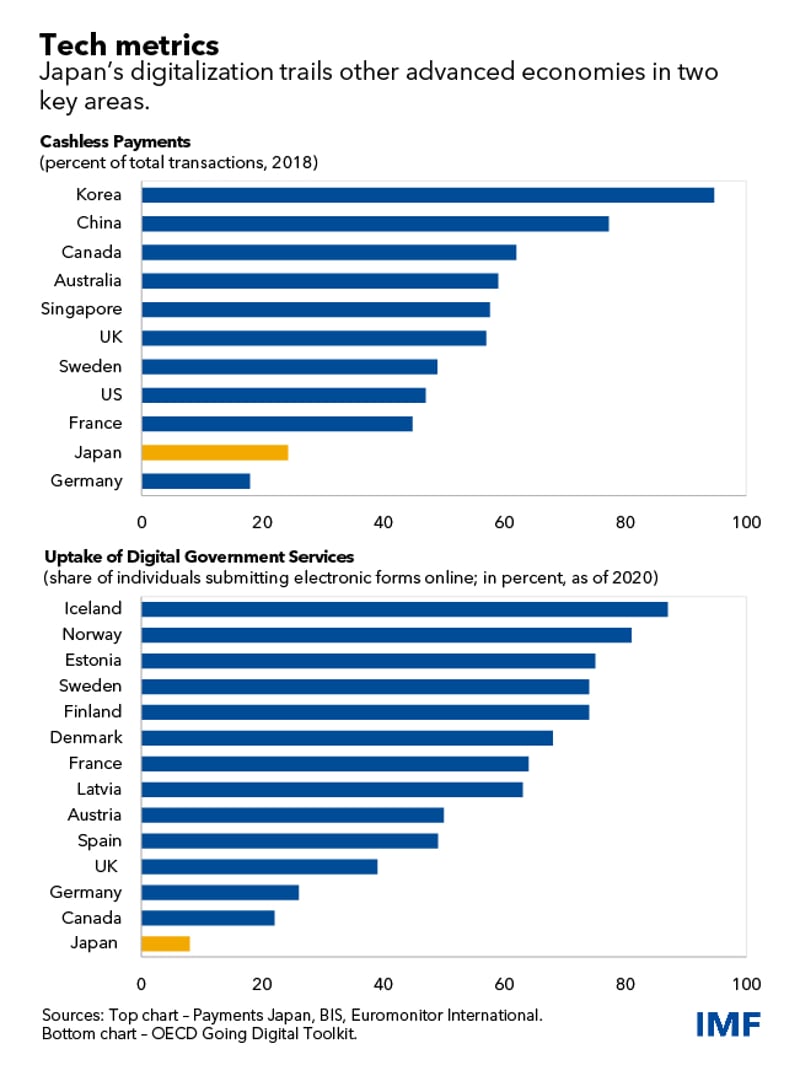
Shinjuku shopping district, Tokyo, Japan. Photo: (iStock/Nikada)
Japan's Digitalization Can Add Momentum for Economic Rebound
June 1, 2022
Related Links
The Japanese economy is recovering from the pandemic as related uncertainty and supply constraints subside and consumption gradually rebounds.
Growth will accelerate to 2.4 percent this year, the fastest in 12 years, and maintain nearly the same pace next year, according to our latest economic projections in April.
Our recent assessment of the world’s third-largest economy credits strong policy support and high vaccination levels. Pent-up consumer demand will help support the expansion.
However, the war in Ukraine following a continuing pandemic pose substantial risks to the near-term outlook. The economy also faces longer-term headwinds from an aging and shrinking population, stagnant productivity growth and major climate change risks.

Japan’s many challenges highlight the importance of efforts to enhance growth that can foster inclusion, reduce inequality, and ensure a sustainable future. Our study shows that scaling up digital investment, along with full implementation of growth-enhancing reforms that increase labor supply and productivity, could boost gross domestic product.
Digitalization, importantly, could provide additional growth momentum. The pandemic underscored Japan’s uneven embrace of technology. Even though it’s one of the world’s biggest users of industrial robots and home of a major electronics industry, it still lags other economies in adoption of digitalization by businesses (for example, continued reliance on legacy IT systems), government, and the financial sector.
This structural weakness was further underscored by how many employers struggled to make the shift to remote work when the pandemic began, reducing economic output and sapping productivity at a crucial time. Paper-based procedures hindered government responses to the outbreak, delaying the 2020 emergency cash program that aided consumers. Adoption of cashless payments and e-commerce have also lagged.

Accordingly, faster digital transformation with government support would boost productivity and growth. For example, lawmakers last year abolished most of the authorization of documents by Hanko seals, the personalized ink stamps used for centuries in Japan and similar to those in other Asian nations.
This pivot to electronic signatures from traditional stamps is an important one because it allows for digitalizing administrative procedures that make government more efficient.
Other initiatives include the Digital Agency, a body established in September under the cabinet to speed digitalization of central and local governments and the private sector.
To ensure that this transition is inclusive, policy support should be carefully designed to mitigate any potential harm for unskilled workers. Other key priorities in accelerating adoption of digital financial services include enhancing public trust by augmenting financial and digital literacy; improving connectivity between different cashless payment platforms; and strengthening data privacy, consumer protection, and cybersecurity.
Greater digitalization, however, will be best if it’s also combined with other growth-enhancing reforms that are important to address Japan’s demographic headwinds.
Bringing more female, older, and foreign workers into the labor force should be a priority. Increasing training and career opportunities for those without lifetime employment, who are mostly women, will help raise productivity and wages. Better corporate governance and reduced regulation would boost productivity and investment.
Looking ahead, Japan would need not only stronger growth, but also growth that is environmentally sustainable. Our study suggests a profound economic transformation built on significant green investments and more reliance on carbon pricing would further support a recovery from the pandemic, while creating a new and clean economic engine for the future. Japan’s commitment to achieve carbon neutrality by 2050 is therefore an important and positive step.
Together, these policy objectives show how Japan can make the most of the disruptions from the pandemic to push through reforms that lift productivity and economic growth.


